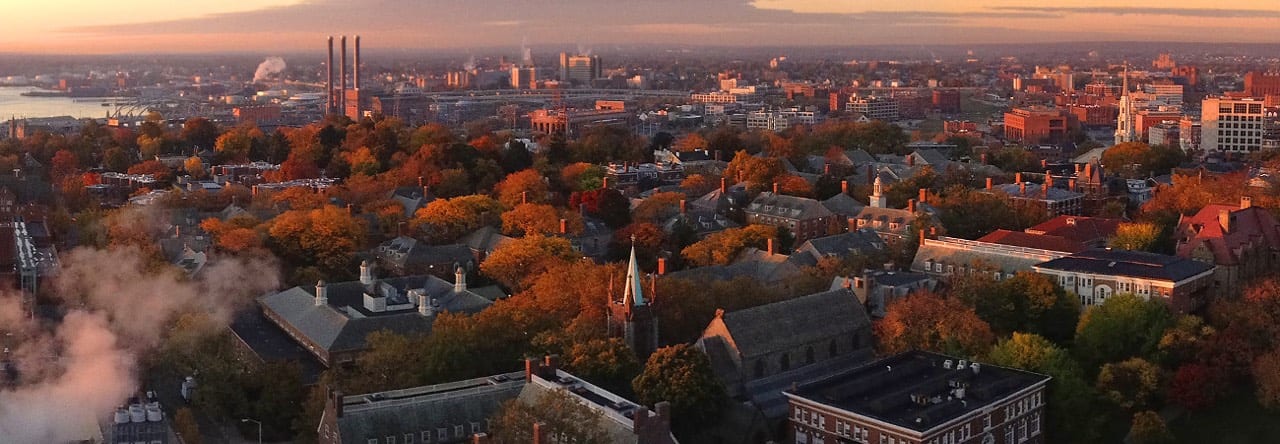On Saturday, October 25, the class held a special day of excavation to coincide with Brown University’s Family Weekend and the AIA Narragansett Society’s Community Archaeology Day. We invited students, families, and members of the community to stop by, learn about archaeology, and excavate with us. Nearly every person strolling through the Quiet Green, enjoying the warm, sunny weather, stopped by the excavations to investigate — often bringing budding archaeologists to assist in the excavation!

Niyo helping two future archaeologists excavate in QG5
During our last excavations, we uncovered a plastic irrigation pipe spanning the length of QG5 (seen in the above photograph). We received word from the Department of Facilities Management that the irrigation channel is inactive and that we could proceed with excavating beneath it. We finished removing the dirt context around the irrigation pipe until we found a uniform layer of gravel, which reminded us of the gravel cut we found in QG6 previously. With diligent work on behalf of the class and numerous helpers, we managed to remove the layer of gravel, approximately 7cm in height, entirely. Beneath the gravel was a reddish clay context, which we hypothesized might be sterile due to its similar appearance to the sterile context found at the end of last year’s excavations.

Raff and myself instructing another future archaeologist in QG6
On our previous excavation day, we removed a gravel cut running down the center of QG6 from the North scarp. However, the previous week’s rain uncovered more gravel north of the already excavated cut. We first worked on removing the remaining gravel, then we encountered a new yellowy clay context. We waited on excavating this context, because we still had soil from the previous context remaining around the recently excavated cut.Both QG5 and QG6 turned up ceramic, glass, brick, asphalt, and metal artifacts — including a beautiful piece of blue glass with visible printing from QG5. I’m looking forward to washing our ceramics and learning more about our artifacts in the Carriage House after the two remaining excavation days.
I enjoyed the excavations and festivities today not only because we had an amazing group of archaeologists and visitors, but also because it marks my one year anniversary with archaeology. Participating in the excavations during last year’s Family Weekend was my first hands-on experience with archaeology. I found my first artifact on this day: a piece of brick. Who knew I would find so many more pieces of brick this year? As part of a bet, I took an archaeology course the following semester. One year later, I’m taking my third archaeology course and have just declared an additional concentration in archaeology. I hope that today’s events end up producing even more archaeologists!
Here are some more photos from the day:

Andy and Raff planning out our day for the ever-complex trench, QG6

Assyriologist Willis getting in on the archaeology

Isobel gives her sister some excavation tips

All hands on deck for rock removal

We had a constant stream of visitors–a great opportunity to talk with community members and visitors alike about our project
Frank Goodman ’16





















